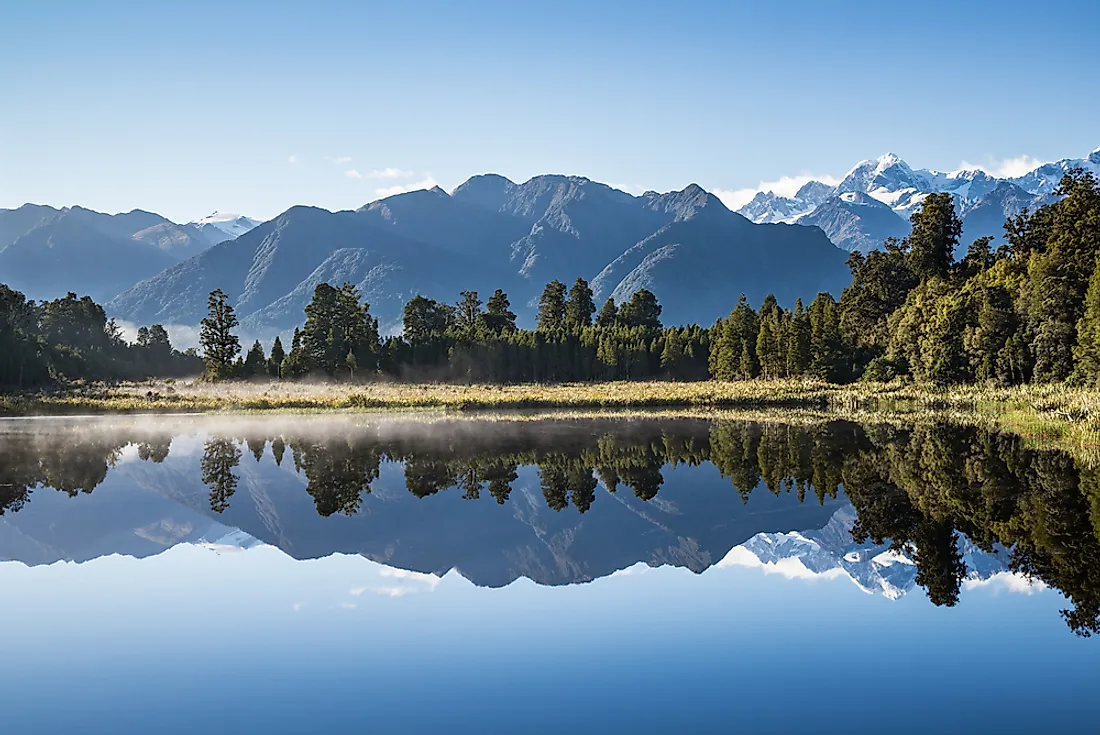Fluvioglacial Landforms: What Is A Kettle?

When glaciers melt and retreat, they leave landforms like kettles within the glacier or on the surface. The word fluvio refers to features that relate to water and glacial refers to features that are of ice origin, therefore, fluvio-glacial is the water that remains behind when glaciers melt. Examples of fluvio-glacial features include kames, kettle holes, proglacial lakes, and outwash plains. A kettle, also called a kettle hole or a pothole, is a shallow depression that fills with glacial water in addition to water from other sources and has sediments. Kettles form when previously buried blocks of ice melt.
Formation of a Kettle
When ice fronts stagnate or retreat, some blocks of the ice may remain either partially submerged or fully buried below the surface. These stranded masses of ice occur due to a gradual accumulation of outwash above an irregular glacier terminus. Over time, the partially submerged ice blocks melt and leave depressions of different sizes where they were. These depressions initially fill with glacial water and, eventually, precipitation, streams, or rivers add more water. For the totally buried ice block, they eventually melt and causes the above surface to collapse and fill the space. This second process leaves more sediments inside the kettle.
Kettles range in size, normally from diameters of fifteen feet to eight miles and some may be up to 150 feet deep. Bigger kettle holes form kettle lakes which may receive additional water supply through underground or surface streams. A kettle that receives water through precipitation or groundwater table is a kettle pond while a vegetated kettle is a kettle wetland. Some smaller kettles may be as a result of shallow meltwater streams carrying a small ice block and dumping it on a site where it settles and later on melts to form a kettle. Most kettles take a circular shape because ice blocks tend to melt in a round form, however, some ice masses, especially the bigger ones, are highly irregular and melt irregularly. Kettles characteristically occur in groups or singles. When they happen in groups, they form a mounds and basins terrain called a kettle and kame topography.
Kettle Bogs and Kettle Peatlands
A Kettle Bog forms when the water in the kettle becomes acidic due to the organic plant substances that decompose in the kettle. Kettle Bogs only receive water from precipitation and are therefore closed ecosystems. When a kettle bog has lime-based soils underneath, the lime neutralizes the acidity and the resultant feature is a Kettle Peatland. Both Kettle Bogs and Peatlands are ecologically important to the different flora and fauna species within them as they have some symbiotic relationships.
Examples of Kettles
The largest kettle lake in Canada is Puslinch Lake in Ontario and it covers 400 acres. Another kettle lake is Fish Lake in the Cascade Mountains in Washington, US and it spans 490 acres. The Prairie Pothole Region that spans from Alberta Canada to Iowa has thousands of kettles, including lakes. New Zealand and Venezuela have one kettle lake each that have sufficient documentation. Austria has three while Canada has ten. The UK and the US have the most kettles, eleven and seventeen respectively, that are equally well documented.











